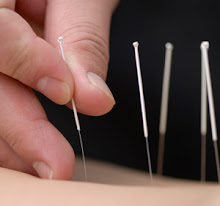I suppose that one of the attractions of being a tea fan is just the sheer variety of teas in the world. You could spend a life time honing your tastes towards just one type of tea, discovering it's complexities year after year. I, however, just enjoy tea. There's nothing better than a nice cup of Earl Grey or an extended session with an old Pu Erh. Whatever your mood there is a tea to match.
I am currently on a challenge to myself right now, to learn more about Matcha. I could be mistaken but I think I drank my first bowl of Matcha in Uji, Japan. Not a bad place to start. The 'tea' street in Uji though is a rather tourist heavy spot and I'm sure the best places are in fact the ones hidden away in the back streets.
One of the best places to start with any sort of tea could well be with the really bad stuff, tea so bad that when you have some of the good stuff the difference knocks your socks off! As previously mentioned I have a rather large bag of the bad stuff in my fridge, it's essentially cooking Matcha. It's bitter, slightly yellow and thin. The next stop was Jing UK's Matcha which was very nice, very smooth and sweet. The first time I whisked it I was amazed just how the 'head' came out, thick and creamy like the head of a pint of stout!
I decided to source some from Kyoto's Ippodo store and forked out for their 'high quality' Kimmo-no-mukashi and 'premium quality' Wakamatsu-no-mukashi teas. The latter being twice the cost of the former. My original idea was to compare them side by side which worked out just fine when comparing the aromas of the powder. I actually prefer the cheaper Kimmo-no-mukashi, it was a little stronger, perhaps a little more pungent and had a heavy overtone of cooked banana with some white chocolate.
I don't think I'll be trying a side by side taste test again though. I am finding it quite difficult to discern the differences between similar Matcha without having the both of them over lapping each other. To my mind both of them tasted more bitter than Jing UK's. They did have plenty of complexity but I am just without the vocabulary to describe what I found. It's worth mentioning that the Kimmo-no-mukashi is a third of the cost (discarding postage) and the Wakamatsu-no-mukashi a little over two thirds of the Jing UK. It's a little like going back to square one with Pu Erh again. All rather frustrating when you can't describe what you feel. Whilst frustrated I am also as high as a kite after drinking both bowls.
Tomorrow morning I'll finish off the last of my Jing UK and see how it goes.
** next morning **
This morning's test consisted of drinking the Jing UK matcha then the Wakamatsu-no-mukashi. I wasn't imagining it, the Jing UK (I wish this tea had a name instead of calling it by the company) was much more sweet pea than banana in the aroma, thicker and smoother with the froth consisting of smaller bubbles and hence firmer. The Wakamatsu-no-mukashi was less pleasant on the palette, slightly sour cream, but had a longer sweeter after taste. The after taste (what is the Japanese for huigan?) is much more pronounced. Two bowls has left me awfully giddy, let's hope that I don't get the shakes as I have an acupuncture patient in an hour or so.
Hmmm, so I wonder. I preferred the taste and smoothness of the Jing UK but the Wakamatsu-no-mukashi was a more complex experience...
Subscribe to:
Post Comments (Atom)





No comments:
Post a Comment